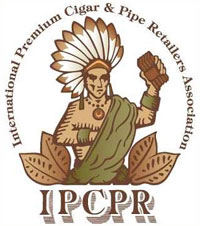 Official Name: IPCPR 77th Annual Convention and International Trade Show.
Official Name: IPCPR 77th Annual Convention and International Trade Show.
The "IPCPR Show" took place August 8 – 12, 2009 in New Orleans, Louisiana. The IPCPR is the International Premium Cigar & Pipe Retailers Association.
The show is described as … "the retail tobacconist’s most important event of the year – a four day extravaganza featuring the industry’s largest trade show – and only open to IPCPR members. Thousands of products from more than 300 suppliers filling 200,000 square feet of exhibit space. Informative seminars and meetings. Unparalleled networking opportunities between retailers and their suppliers." From: http://ipcpr.org/about.html
Basically the show is the main event of the year for manufacturers to introduce new products, such as pipes and tobacco to retail tobacconists across the country.
PipesMagazine.com provides our coverage of the show here.
Our first stop was FGT Enterprises (see our profile of FGT here) where we spoke to Frank "Smitty" Smith. He explained how retailers hand-pick the exact pipes they want from the display, then they are individually bagged with the retail shop’s name for later shipping after they are cleaned and polished. Our conversation went like this.
Smitty: We bring the pipes and they pick them out and then we put them in a bag and then take them back to the warehouse, and make sure everything is okay, and then we ship them back out to the customer.
PipesMagazine: Okay, so they can choose the pipes here and then you ship it to them?
Smitty: That’s exactly right. When we get back to the warehouse, then we check all of the pipes to make sure that there’s not any problems with them or any damage. Sometimes, when you are putting 40 or 50 pipes in a bag, they get scratched or something and we make sure we correct that before it goes out to the store.
PM: Very good and tell me about the pipes that you have here. These are…
Smitty: These are exceptional grain pipes. In other words, this is one of the best pipes that you can buy. There is no one in this whole convention that will sell pipes of this quality for this price.
PM: Right, the prices are very reasonable.
Smitty: Very, very reasonable as I said. You notice the grain in the pipes.
PM: Beautiful.
Smitty: and so forth. These are exceptional grains and they maybe will have just one or two little fills in them that we have to, you know, but you will never see them.
PM: And these are handmade?
Smitty: These are handmade.
Smitty: These are ABC First and ABC First means no flaws, nothing, and for what we sell them for. When you are running say, you are cutting 2000 blocks for pipes, of the first, you might get 1 1/2%, that’s it that are flawless so most people in this range would sell these pipes for $200 or $300 but always we keep our prices very low.
PM: I see $52.95.
Smitty: $52.95 for a perfect pipe. As I said no one, you can go all over this show, and you won’t find this quality of pipe at this price anywhere because of the small amount of pipes you get when you run as I said 2000 pipes, you only get 1 1/2 to 2%, I don’t care any manufacturer over the world, that’s all they get.
PM: Right, that’s just the nature of the briar.
Smitty: Exactly, that’s the nature of the briar.
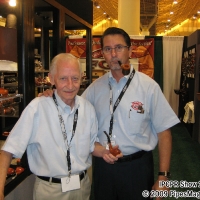 |
 |
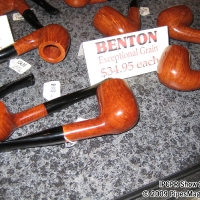 |
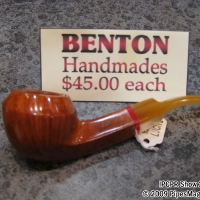 |
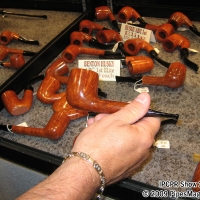 |
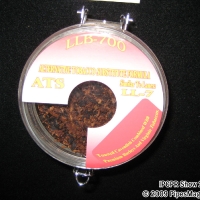 |
The FGT booth was also showing some new tobacco blends to replace some of the discontinued Lane blends. I spoke to Gordon Smith about this.
Gordon: When Lane discontinued a lot of their blends, at one time, Lane had 13 or 14 basic blends, but that changed when they were sold to Imperial Tobacco.
Imperial came in and was working with a jobber that was selling all of their product and, what they did, they reduced to the top six Lane tobaccos. Once you get somebody on a pipe tobacco, they want it. So what we did was we went back in to our blending area and we came up with some of the blends that Lane used to sell, their TK6 and their LL7, their HGL … Ours is called ATS tobaccos, Alternative Tobacco Solutions.
PipesMagazine.com: And that is to replace the discontinued tobaccos?
Gordon Smith: The Lane tobacco, that is correct. We came out with a raspberry. Their issue 2000 which is a burley base, their hazelnut which has a hazelnut taste, their HGL which is a Virginia and a Black Cavendish blend, and their LL7. All of these were very popular tobaccos but the main volume was done with 1, 2, 3, 4, 5, 6.
————————————————
Our next stop was Villiger Stokkebye, marketers of Orlik Tin Tobaccos, W.Ø. Larsen, Stanwell Tin Tobaccos, Erinmore Tin Tobaccos, Escudo Tin Tobaccos, Balkan Sasieni, Skandinavik, Sail Tobaccos, and Troost Tobaccos.
We spoke with Lois M. Siler, Division Sales Manager, and Sandy Porter from The Porter Agency – Villiger Stokkebye’s Advertising, Marketing and Communications agency.
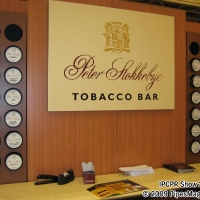 |
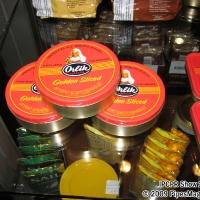 |
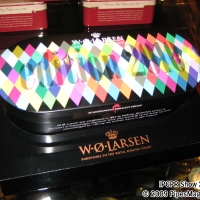 |
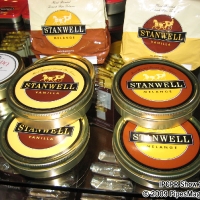 |
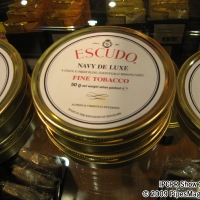 |
Every year W.Ø. Larsen introduces a Limited Edition pipe tobacco. We saw the festive looking tin for the 2010, W.Ø. Larsen. It is limited to just 1,000 tins in the U.S. and will be on the market in November 2009 in time for the holidays.
We didn’t have definite information on the blend at the show, but according to Sandy Porter, it will be similar to last year’s blend; "It was more of an aromatic and if I remember right about last year’s I think maybe some fruit, apricot and honey and that’s just out of my memory.
Sandy walked us through some more products.
"It’s new to this company and we had this last year at this show too, but Escudo, Troost, and Sail Tobaccos are old brands that were formerly made in a factory in Holland, and the Orlik Company bought that company out about 18 months ago. The Scandinavia Tobacco Group bought it out and these were really hard to find in the U.S. because that company, the Dutch Company, kind of lost its focus on the U.S. market and so now these are much easier to find. There is much better distribution through Stokkebye."
Stokkebye was another tobacco maker showing new replacements for discontinued Lane blends. Sandy went on to tell us, "This new version is very much like BCA. It’s Dansk Black, and the other one is Golden Dansk. It’s very similar to 1 – Q, the Lane product.
They’re hitting the market right after this show."
Since Stokkebye distributes Stanwell Tobacco, they have a relationship with Stanwell Pipes. Sandy was nice enough to walk me over to the Stanwell booth and introduce me to …
————————————————
Søren Lundh Aagaard, Managing Director of Stanwell in Denmark.
Søren started off by showing us an innovative new fashion in pipes that has already won the 2009 Red Dot Design Award, The Moyo, which is a briar pipe covered with rubber and uniquely packaged.
Søren explained the ideas behind the Moyo pipe.
"Our average smokers, at least in Denmark and Sweden are 55 – years – old. And people that are 55 today will be 65 in 10 years and soon they will be gone. So, we definitely have some challenges in terms of recruiting young pipe smokers."
So we wanted to add some story-telling to the product because we know that’s really big today in accessories and fashion accessories. It’s much more than just a product itself, it’s also the story that goes with it. So you have a conversation piece also in your hand.
We took our featherweight series which is a series of small pipes that don’t take too much tobacco. They don’t take up too much room in your pocket and they’re easy to smoke. And we found out we could give it a rubber coat. So, we rubber coated these pipes and they come in a very nice box. There’s a story to the product. Moyo in Swahili means feeling and smoking a pipe is a very emotional thing. So we came up with the Swahili word also because where Swahili is spoken is also the regions where they harvest the rubber. So that would sort of bring a circle to the story and that was our intention."
"And another challenge we had is of course that we’re not allowed to communicate these great stories because we are a tobacco related item. So, that’s more of just a test. I’ve added this pipe to a very large European Award for the Red Dot Designer Award. And we won first prize in the Industrial Design for Fashion Accessories. And now all of the sudden we are able to communicate a design story and I’m actually allowed to call up a journalist and tell them hey I have a great story for you here and it’s not illegal for me anymore."
"It’s been very warm and receptive and we’re already working on a fall edition that would come out at the end of this year. It will be more of a brownish rubber coat with some sort of like covered dust in it. It doesn’t look metallic but it gives some depth to the rubber coat. And it comes also in a very nice box which is made out of tobacco leaf.
PipesMagazine.com: When will this product be available on the market?
Søren: It’s available now.
PM: What is the base material of the pipe?
Søren: It’s briar, but rubber coated.
Actually it’s high grade wood. It’s the same we use for our black polish pipes. People might think that we want to cover up a lot of sand pits here to be honest. They are good bowls, but with bad graining. But if we had big fillings in these, the fillings will, will move independently from the wood and you would be able to see it underneath the rubber coat because it’s just a very, very thin coat – just like with the black polish pipes. These are high grade bowls the only thing with them is that they have bad graining.
The approximate retail price range is between $260 and $300.
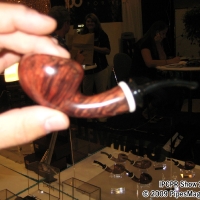 |
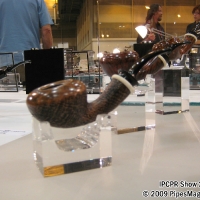 |
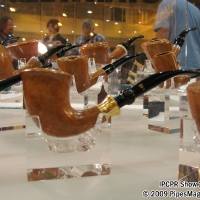 |
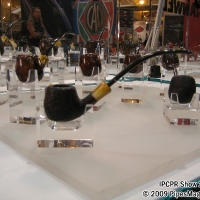 |
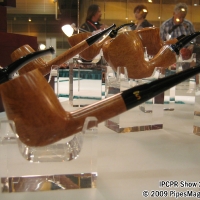 |
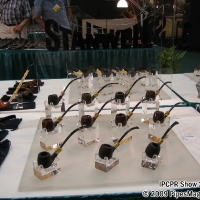 |
Another new thing is the Nana Pipe. Nana Ivarsson (pronounced "E-varsson") is the granddaughter of Sixten Ivarsson. That’s Nana over there – the young, beautiful, also industrial designer and pipe maker. Nana and her grandfather founded the basis of all of our standard shapes back in the ’50s and ’60s. He was doing most; he was doing 80% of all the shapes that came into the company. And even today, I think from in, in the standard line 50% of it is still his old shapes. And her father Lars Ivarsson, Sixten Ivarsson’s son, has also done pipes for us. And now we sort of wanted to close the circle and bring her in for us as well. She is a very expensive lady. Her pipes they retail from $1,000 US dollars and upwards. But here you can, you can get close to her feel at a much more affordable price because we machine manufacture our pipes.
PM: Okay, so it’s Nana’s hand made designs done by machine?
Søren: Yeah, exactly. She delivers prototypes for us and we do test runs and do mouth pieces for her. And this is exact down to the 100th of millimeter copy of her, of her prototype she’s done for us.
PM: So, the $1,000 and up that’s her handmade…?
Søren: That’s her handmade pipes yeah.
PM: And then this line?
Søren: Depending on the quality the most expensive one is about $300 and the sandblasted ones around $250 depending on if they’re smooth chock or, or they’re all black.
Søren: Then we have our, our flawless pipes. The flawless pipes usually go to customers in Russia and China. Whenever we turn, when we do a turn, we do approximately 500 – 700 pipes per turn. And out of these 500 – 700 pipes we will get three to four, maybe five, maybe two with bowls which are completely flawless. So, these are like the pearls of our entire production.
PipesMagazine.com: When you say per turn – that’s when you have like a batch?
Søren: Yeah we do a batch – whenever we do a new shape and when we start the production of a shape we do approximately 500 – 700 pipes at a time.
Søren: And out of these 500 – 700 pieces when we are going through the different qualities, we will get some which are completely flawless. They are very unique. But this is the first time I’ve presented it to the US market and as you can see these were basically sold on the first day. I have seven or eight left. So, it takes time for us to get them but you will find beautiful, beautiful, beautiful, fantastic pipes which from competitive brands are even more expensive I think.
Søren: Then we have the revival series. It’s a new series we started up doing last year where we built – we had a pipe museum in Denmark with all of our old shapes and we’d go down and we’d pick out a shape and we’d do a re – run. So this is a rerun from the ‘60s from something we called the Elegant Series. Today we use all acrylic mouth pieces, but this is old style mouth pieces we got. We do the original S which is embedded in the mouth piece and then we chalk it up with just normal writing chalk. And this is how we used to do it back in the ’60s. And this is this year’s.
PM: So that’s the name of the range is Revival.
Yes, Stanwell Revival.
Next year’s will be this. It’s shape 168. It used to be called Golf because it sort of looks like a golf club. Then we have – these are not new, but I’ll just give you a little story to how we do these because I think it’s unique how we do it.
All of our rings have been nailed. So this is not just glued on, we nail them with brass nails. And before doing that when we have turned off the excess material to mount the ring, we take all the bowls and we bake them in an oven overnight. And this means we drive out the last humidity that’s in the bowl which is between 8 to 10%. And once this is driven out, it makes the bowls shrink just a tiny, tiny bit and we then stick the ring…And this will – once the pipe has been outside in a normal environment again it will obtain this natural humidity from there and sort of press against the side…
This will make sure it doesn’t come off. So, I will guarantee you we don’t lose our tough rings. And another thing if we look at the black polish pipes and like the black polish bamboos – all black polish is not, it’s not a lacquer. This is a stain.
We stain the black polish pipe 11 times with a staining process that takes two weeks because they have to dry up between these stains. And this means that we don’t put color on the surface of the pipe, but we put it inside the wood. Because we do it so many times we even, we are able to polish it up so it actually looks like paint. But this will not chip. It will of course after 10 – 15 years when you smoke the pipe you will be able to wear it off because it is just a stain and not a lacquer.
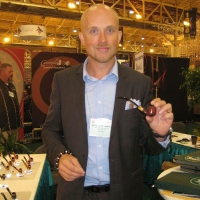 |
 |
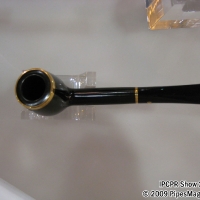 |
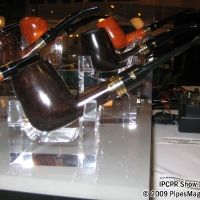 |
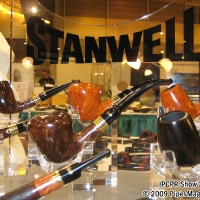 |
 |
Another new series we are also launching here, at the fair, is the Naval Series. I was always bothered by the fact that the rings don’t have a story to it. It, it’s just there for the looks. So, I wanted to add a story to the product like we’ve done with the Moyo pipe. And I’ve always thought that the brass rings sort of look like the distinction on Naval Officers.
So we have copied four different ranks from the Naval Officers. So we have an Admiral, we have a Commander, and a Captain, and a Lieutenant. And of course, the rings are representing also the quality, the different qualities of the pipes. So the Admirals would be the highest grade and the Lieutenant will be the lower grade of sandblasted pipes. All of the pipes come in a miniature sea bag.
The Pipe of the Year ’09, this was shaped by Tom Eltang. We have a close working relationship with Tom and he’s done a lot of shapes for us and he’s usually the guy doing our own non – filtered pipes of the year. So, this is the ’09. It’s a beautiful, beautiful shape. And in 10 we have also worked with him and he has done a special shape for us. So this will be out at the end of the year and probably be in the US market in the beginning of ’10. And we have a Christmas pipe that we bring out in October and this has been shaped by Lasse Skovgaard. It’s a young Finnish pipe maker.
Lasse Skovgaard is the son of Benni Jorgensen.
Benni is also one of the original Larsen pipe makers which we are still collaborating with. And he is doing some of our high grade Larsens. And Lasse has his shop in our factory. He is doing a lot of our repairs so … It’s a small world.
————————————————
This concludes Part I. Watch for Part II of the IPCPR Show next month.




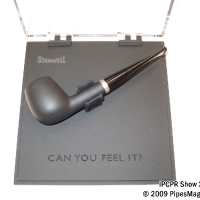




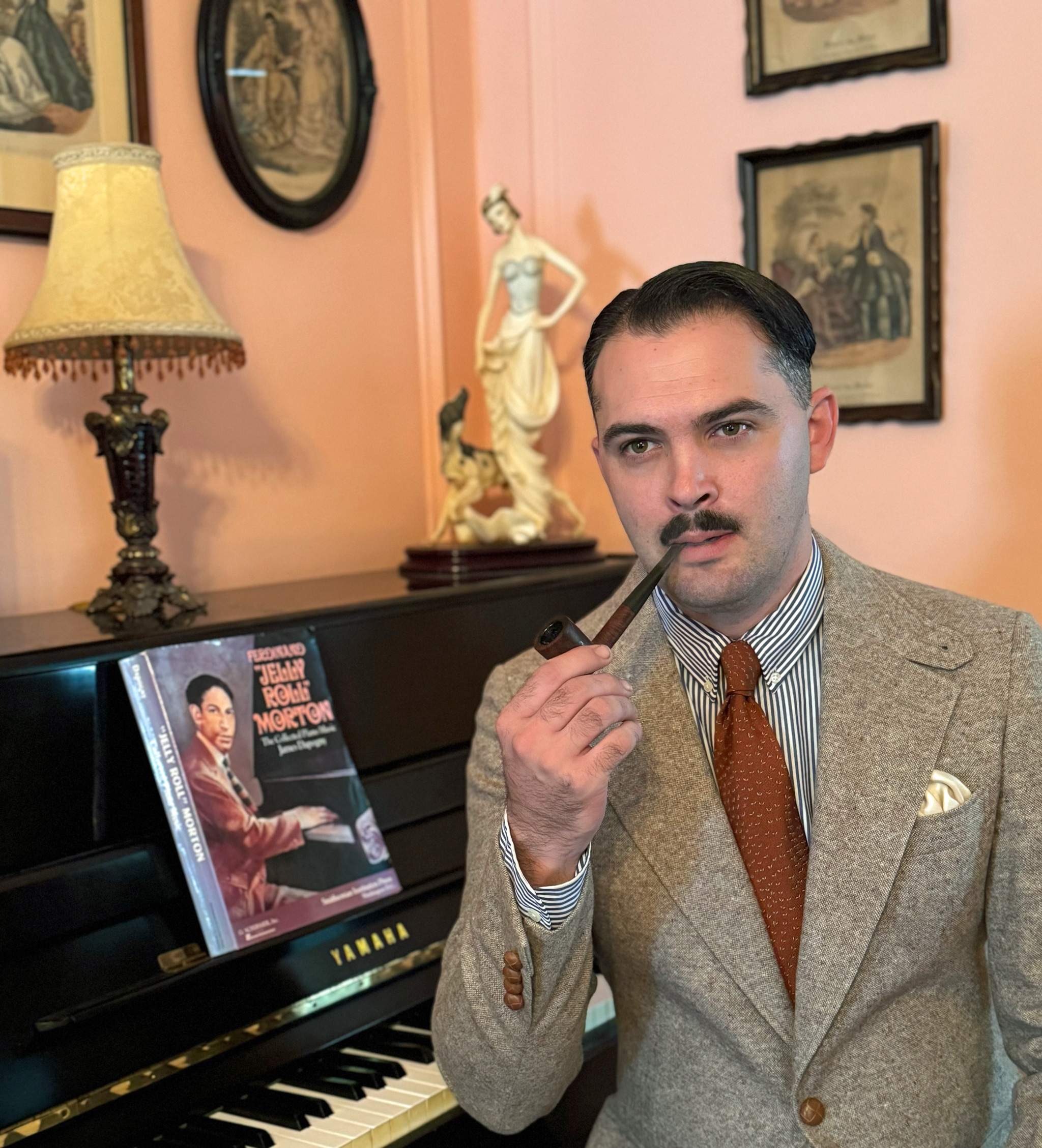
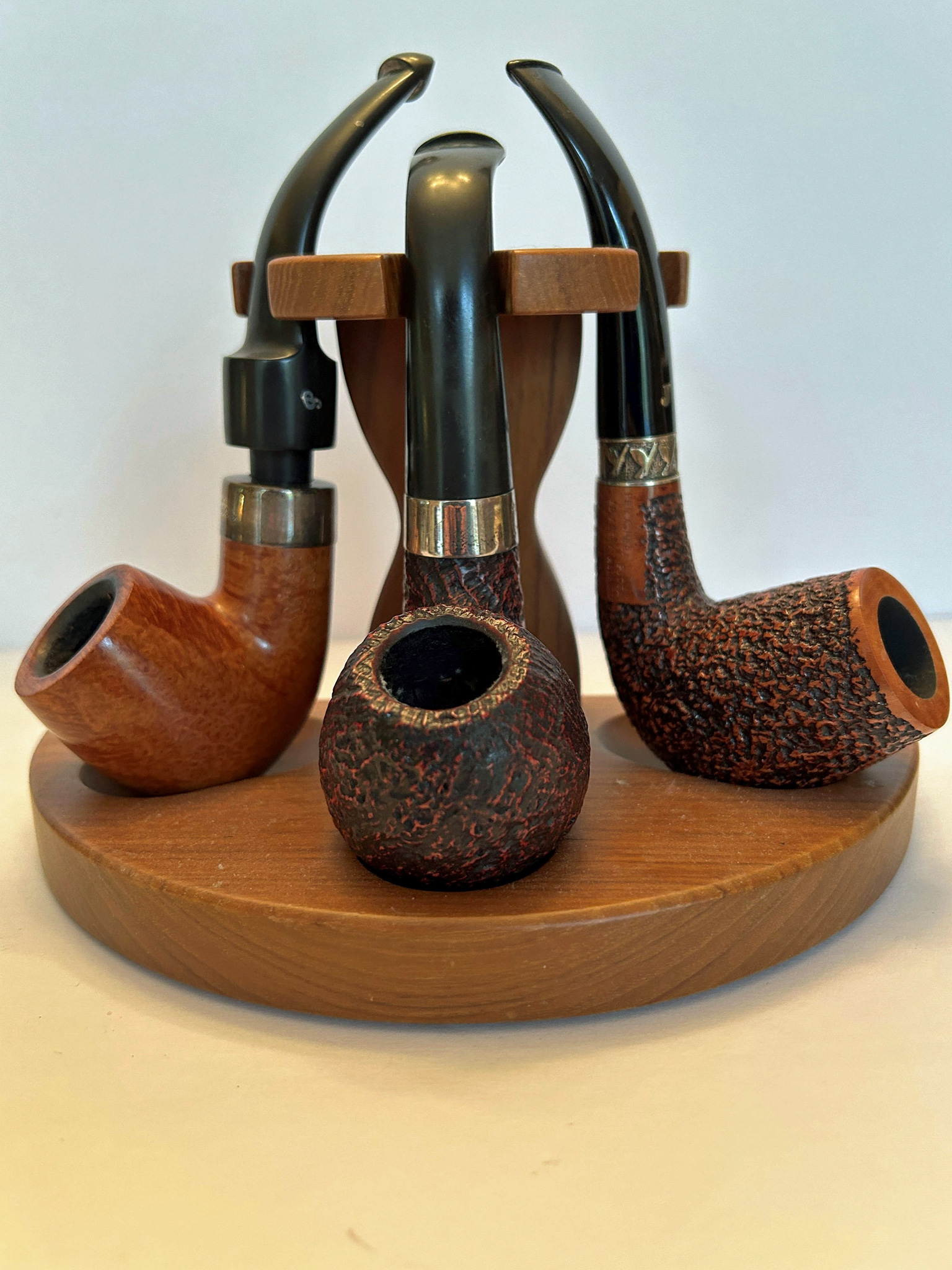
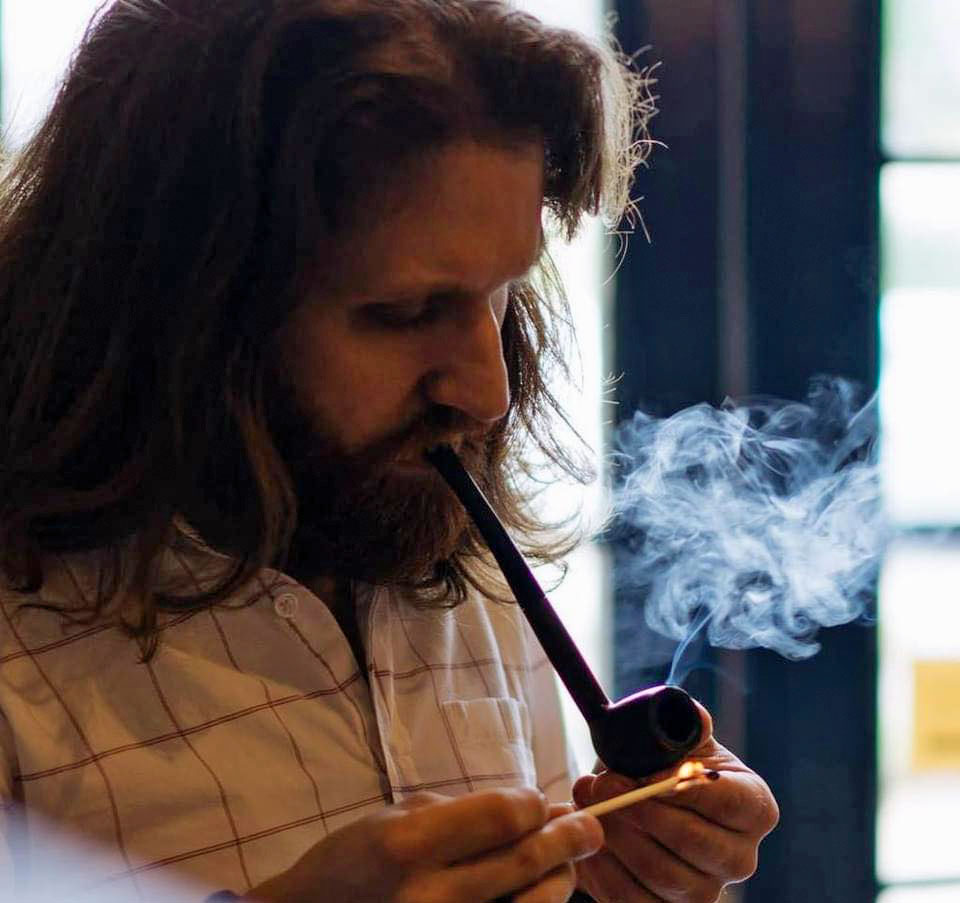
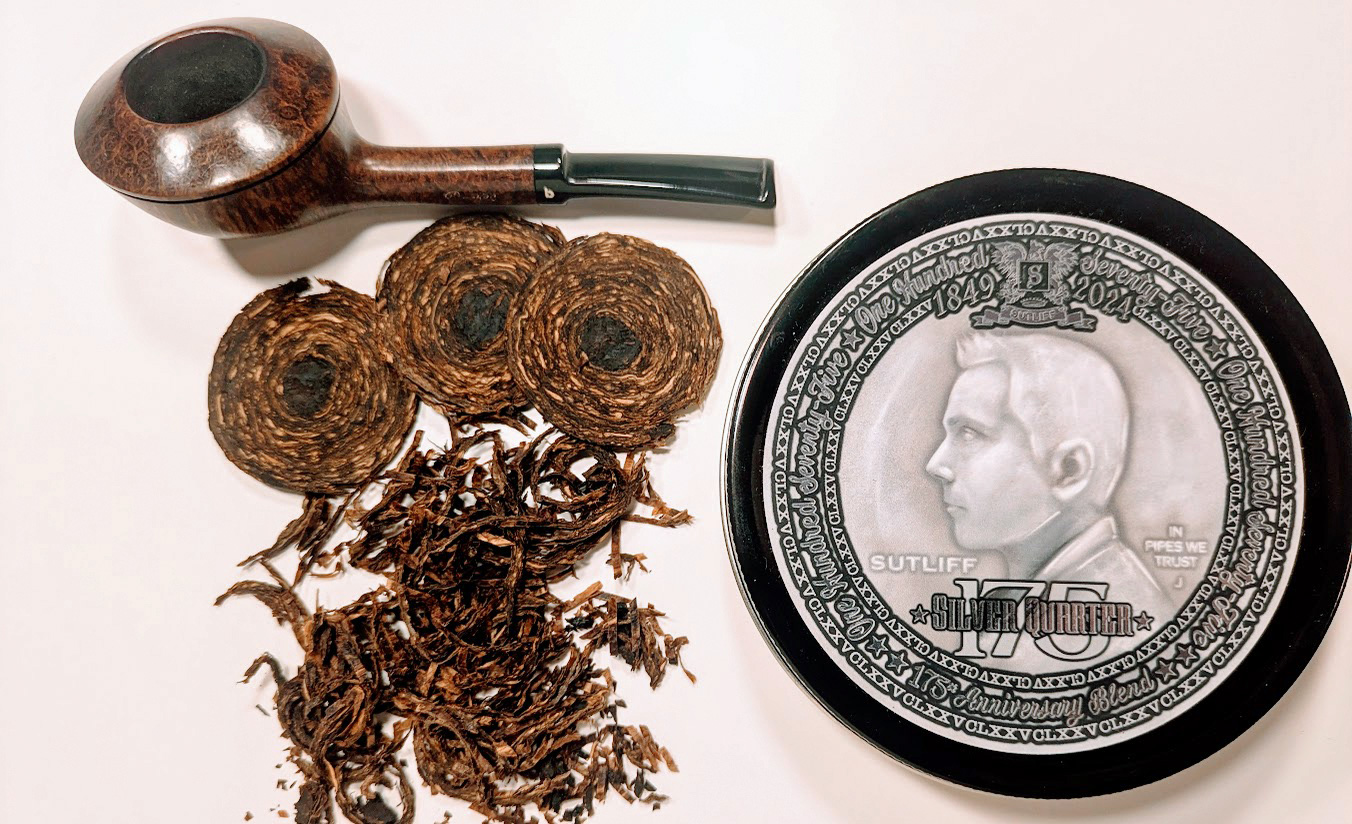
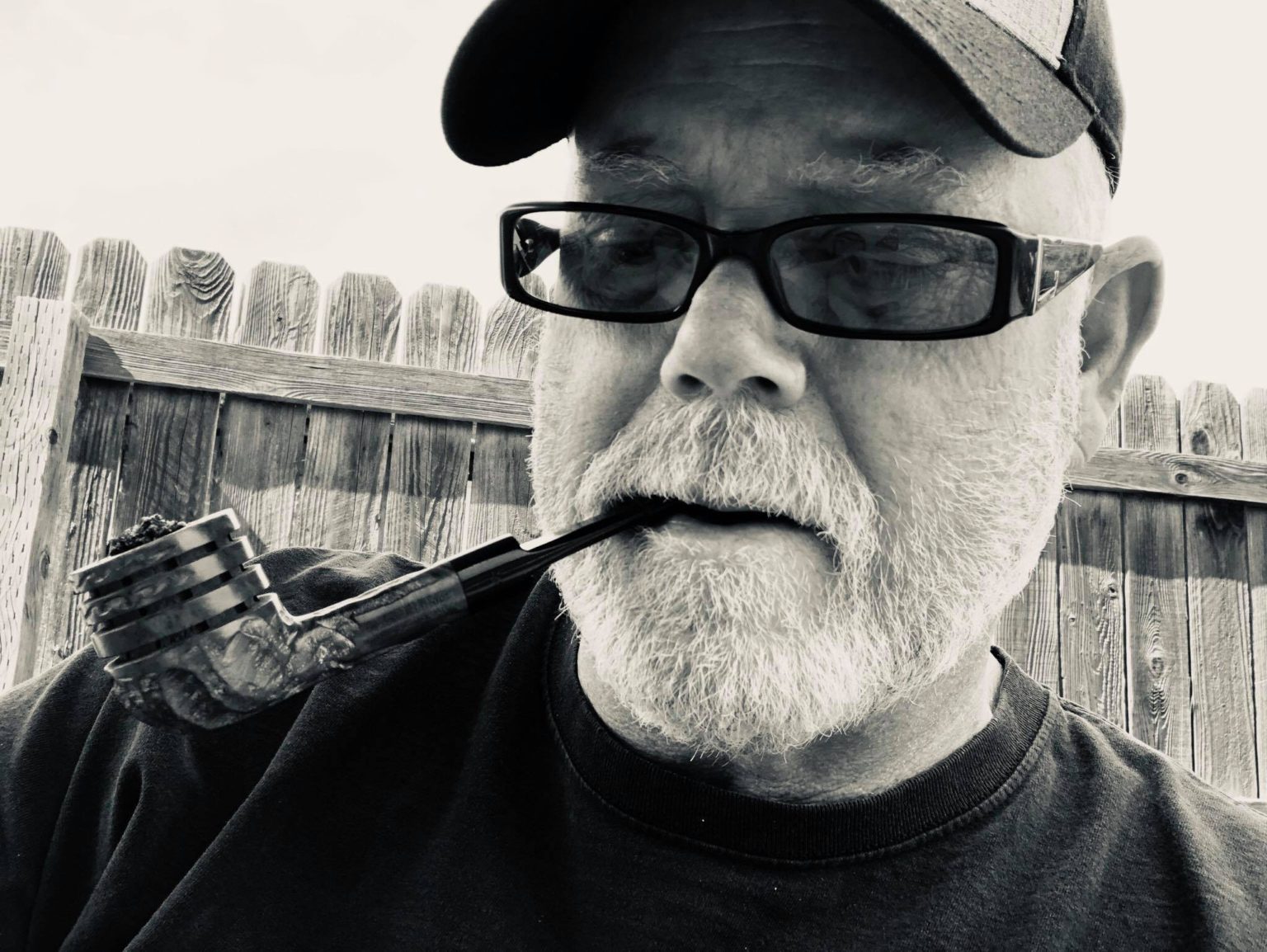

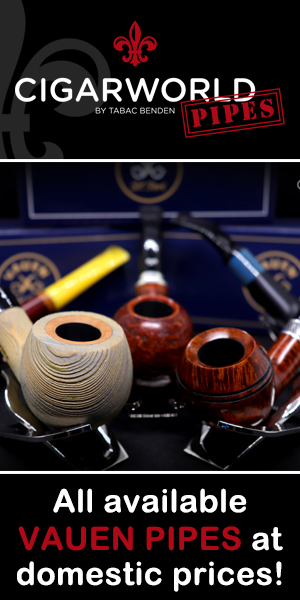



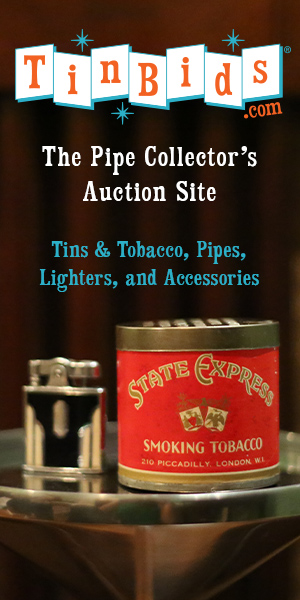
Great stuff Kevin!
Kevin, nice articles. I will forward this on the Soren so he can read it as well. One correction in the Stokkebye article – the Lane blend is BCA, not DCA.
–> the Lane blend is BCA, not DCA
Fixed! Thanks 🙂